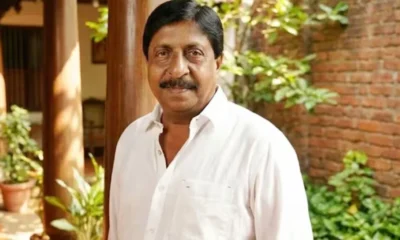Latest world news
Trump got Trumped: Covid-19 pandemic effect
When Microsoft’s co-founder Bill Gates warned about future pandemics in a 2015 TED talk, many Americans believed that it was a normal warning from the billionaire philanthropist.
Published
5 years agoon
By

By Mantosh Sharma

When Microsoft’s co-founder Bill Gates warned about future pandemics in a 2015 TED talk, many Americans believed that it was a normal warning from the billionaire philanthropist. Gates said, “If anything kills over 10 million people in the next few decades, it’s most likely to be a highly infectious virus rather than a war.” He continued, “We’ve actually invested very little in a system to stop an epidemic, we’re not ready for the next epidemic.”

The US government had received a formal notification about the outbreak of Covid-19 in China on January 3.
The government did not take the threat seriously. It delayed a response and showed no acknowledgement of the threat. It took six whole weeks for a proper response from the government. On January 31, the US banned foreigners who recently visited China. On February 29, travel restrictions expanded to Iran and an advisory for South Korea and Italy. By March 11, the US actually suspended most travel from Europe. During this time, the virus was infecting the USA, and by March 16, 2020, the United States of America had the most infections in the world.
Professor Ooi Eng Eong, the Deputy Director of the Emerging infectious Diseases Program Duke-NUS Medical School, said, “To put it bluntly, the US was unprepared for it. They held on to a very optimistic view. That this was an Asian problem that wouldn’t reach them.”
Had the tests occurred in January, with effective communication for everyone, as it was a shared risk, the US would have been in a different position.
It just took a few weeks for the coronavirus to jump from 2 million to 3 million cases, and it is now approaching 7 million cases with more than 200,000 deaths worldwide. The University of Washington Institute for Health Metrics and Evaluation, IHME Model, predicted that the country would witness more than 208,000 deaths by November. On March 31, Dr. Deborah Birx, the coordinator of the White House coronavirus task force, presented the following chart:

However, the current death numbers are higher than projected for the outbreak with intervention.
The pandemic response was fractured, disorganised, politicised and lacked cohesiveness, as well as containing inadequate contact tracing. The government did not act early enough. Cases in countries like South Korea, Hong Kong and Taiwan were much less in the initial months as compared to the US. These countries tested citizens earlier and regularly, contact tracing was used and there was a political will of consistent messaging about the pandemic. The US tested fewer people and their policy to counter the pandemic was full of confusion and misdirection.
As recently as July 4, President Donald Trump said, “99% of Covid-19 cases are harmless.” However, medical stats suggest otherwise. 15-20% of cases need hospitalisation and nearly half of them need ICU with permanent injuries after sustaining the virus.

The Congressional Budget Office (CBO) suggested that the pandemic could affect 8 trillion dollars off from economic growth. Covid-19 has devastated service sectors, small businesses, daily wagers, hospitality and the travel industry. There were multiple revised estimates for economic contraction for 2020. It was ranging from 5% to 20% in 2020.

US President Donald Trump
Covid-19 rattled Trump’s presidency and it was the crisis of confidence in the government. His biggest narrative and talking point was the strength in the US economy, booming stock markets and the record-level unemployment rate. He was able to boast about it not only to his voter base but also to the established Republican base as well. It has given him an overarching power to sell himself to all small pockets of resistance in his own party. This also gave him the political capital to engage with Europe as well as other trading and strategic defence partner-states around the world.
Secondly, Trump dealt with the Covid-19 pandemic like he did with his adversaries. There is the predictive way of dealing his earlier crisis like the Russian collusion in his election and the firing of a few of his appointees who became adversaries. He first denied the allegations and later ridiculed, defamed, and downplayed the credibility of the messenger. Michael Cohen, John Bolton, John Kelly, Omarosa Manigault Newman, Jerome Powell, Anthony Scaramucci, Jeff Sessions, Rex Tillerson, and a few more have all gone through the same treatment. They all were praised by Trump while being hired and then thrown barbs at when they were fired.
The handling of the pandemic was on a similar pattern. Here are a few statements made by President Trump about the coronavirus cases.
On January 22, he said, “We have it totally under control – it’s going to be just fine.”
On February 24, he said, “The coronavirus is very much under control in the USA – the stock market is starting to look very good to me.”
On February 28, he said, “It is going to disappear. One day, it’s like a miracle, it will disappear.”
Again, dealing with the pandemic as his political enemy, he falsely created hope. He stockpiled millions of doses of hydroxychloroquine without any scientific evidence that it works. He purposely did not wear masks as a political notion, suggesting to his political base for the defiance of establishment.
This predictable instinct of his personality inadvertently positioned Donald Trump against the pandemic politically. His logic was that if you cannot win, talk it down and hence he started talking Covid-19 down.
When Covid-19 destroyed his economic narrative and political capital to bargain on international trade and alliances, he turned over to cultural issues, seeking refuge in his political base playing with racial tension. Two sections were being targeted, rural-supporter Republicans, and white-suburban moderates and independents.
Former White House Communications Director for Trump, Anthony Scaramucci, has summed up on a Yahoo Finance live video program very well, “It’s a racist move and it’s designed to help him with his base,” “If you go through his internal polling numbers, he is down double-digits in most of the swing states that he needs to win. So when he’s saying nonsense like liberate Minnesota or liberate Michigan, he’s trying to rile up his base. His only play right now is to get the people that voted for him last time to turn out in higher levels than in 2016.”
In 2016, he had positioned himself against illegal immigrants in the USA, proposed to build the wall on the Mexico border. However, in 2020 he had to find another ghost enemy, to position himself and his base against something to distract people from the pandemic-related political fallout. Hence, the China trade rivalry was brought into as a recent talking point. After the approval rating dropped, failure to contain the pandemic and economic disaster needed a diversion for the 2020 election. China must pay for the damage and he bashed Biden and China.
Thirdly, overplay with his political base and not much effort to expand beyond to other segments of society had rattled traditional Republicans who voted for him in 2016. They think another four years of Trump’s presidency may harm the Republican Party in the future. The Lincoln Project, Republican Voters Against Trump, a new super PAC, Right Side PAC, and veterans of the McCain and Bush campaigns are targeting anti-Trump Republicans to support Joe Biden in the November election. Cindy McCain, the widow of the Republican Party nominee, endorses Biden for President. This has strengthened Biden.
The President’s response in handling of the pandemic has eroded confidence in a section of voters who voted for him in 2016. Trump led in the senior citizens’ group over (Hilary) Clinton by 7 points. The new poll is suggesting Joe Biden has a lead around 10 point among registered voters. (Washington Post/ABC poll). This is the same for young women voters. Similarly, for younger voters, campus life and job prospects were shattered due to the pandemic. A recent CNN poll is showing Biden leading by over 20 points among voters under the age 34. Younger voters helped Democrats in 2018 to take over the house.
According to the NBC News polling average, The RealClearPolitics general election polling average and FiveThirtyEight’s national polling tracker gave Biden a 7-8 point advantage. Florida, Pennsylvania, Michigan, Wisconsin, North Carolina and Arizona are in trouble. Even Georgia is showing a small lead for Biden by Fox News. Arizona is breaking more in favour of Biden. Trump’s standing on independents and seniors have eroded due to the pandemic and the civil unrest created by the killing of George Floyd.
Perhaps, Trump has realised this. His recent political conspiracy theory on mail-in ballot fraud is another political divergence narrative to make the adverse election outcome questionable, hence doubtful.
However, American democratic institutions are independent and very powerful. The comments made by FBI Director Christopher Wray on the President’s conspiracy theory on mail-in ballots in the 2020 election sums it up. “Now, we have not seen, historically, any kind of coordinated national voter fraud effort in a major election, whether it’s by mail or otherwise.”
If the statistical trend continues, as it is, in the next 40-50 days we may witness a big reversal in the 2020 US Presidential election in favour of Biden. There is a chance of a landslide victory in electoral votes as witnessed in 1980 when Republican Ronald Reagan defeated incumbent Democrat Jimmy Carter with 489/49 electoral votes.
You may like
-


Trump warns of new tariffs on India over US rice dumping concerns
-
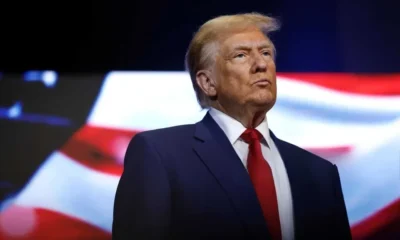

Trump pledges permanent pause on migration from Third World countries in Thanksgiving message
-
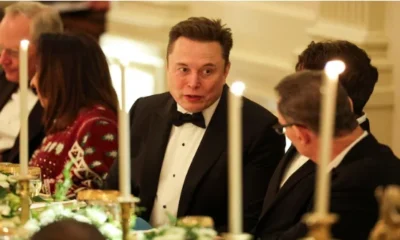

Elon Musk attends Trump–Saudi prince dinner amid signs of reconciliation
-


Trump defends tariffs, promises $2,000 dividends to Americans
-
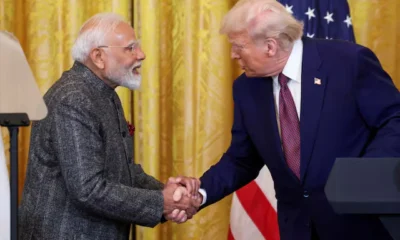

Trump calls PM Modi a great man, hints at India visit in 2026 amid ongoing trade talks
-
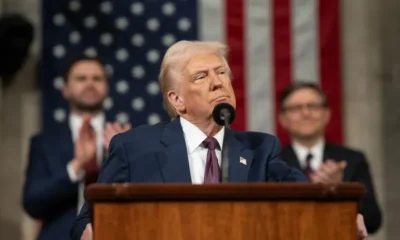

Trump orders US to test nuclear weapons, cites Russia, China, N Korea, Pakistan are at it
Latest world news
Hindu man lynched and set on fire in Bangladesh during anti-India protests
A Hindu man was lynched and set on fire in Bangladesh’s Mymensingh district amid rising anti-India protests after the death of a radical student leader.
Published
2 days agoon
December 19, 2025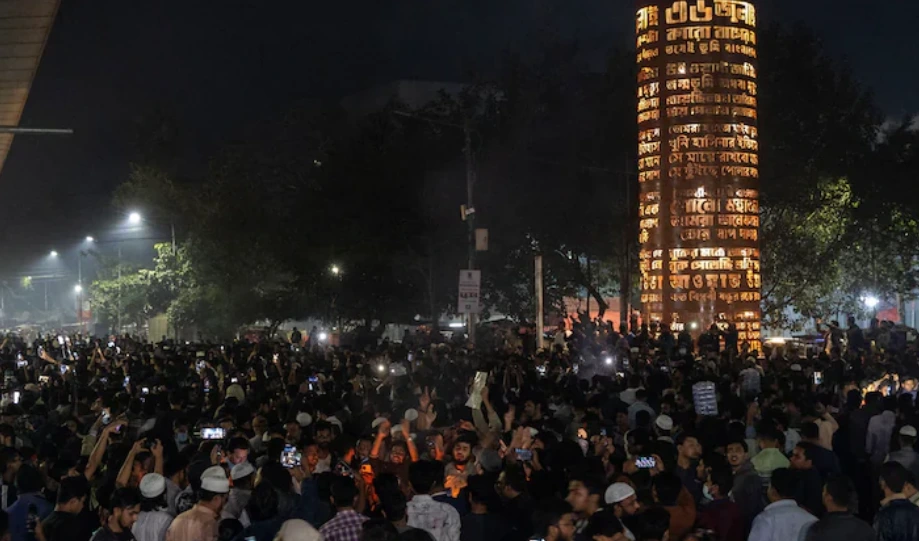
A disturbing incident of mob violence against a minority community has been reported from Bangladesh, where a Hindu man was lynched and his body set on fire amid escalating anti-India protests following the death of a radical student leader.
Mob lynching reported from Mymensingh district
A 30-year-old Hindu man, Dipu Chandra Das, was lynched by a mob in Bhaluka Upazila of Mymensingh district after allegations surfaced that he had insulted Islam. According to media reports, the incident took place on Thursday night at an industrial area where Das was employed.
Das was accused of making derogatory remarks about Islam and Prophet Muhammad during an event organised at his workplace to mark World Arabic Language Day. The allegations spread rapidly within the factory premises and nearby areas, leading to heightened tension.
Eyewitness accounts cited in media reports said Das was assaulted by an angry crowd and died on the spot. After his death, the mob allegedly tied his body to a tree, beat it while raising slogans, and later set it on fire.
Body burnt at multiple locations, traffic disrupted
The violence did not stop there. Reports suggest the mob later moved Das’s body to a nearby bus stand area and again set it ablaze. Subsequently, the body was taken to the Dhaka–Mymensingh highway, where it was burned once more, leading to panic among locals and a temporary disruption of traffic on the busy stretch.
Confirming the incident, the local administration said a person was killed following allegations of insulting the Prophet. Officials added that the body has been taken into police custody and the situation is being monitored.
Interim government condemns violence
The lynching took place against the backdrop of widespread protests across Bangladesh following the death of Sharif Osman Hadi, a prominent leader linked to the July Uprising. The Muhammad Yunus-led interim government strongly condemned the killing, stating that there is no place for such violence in the country.
In an official statement, the government appealed to citizens to reject hatred and violence, stressing that those responsible for the crime would not be spared.
Anti-India sentiment intensifies after Hadi’s death
Tensions have been high in Bangladesh since Hadi’s death, with protests, vandalism and arson reported in several cities. Demonstrators targeted prominent media offices and symbolic locations linked to the country’s political history.
Hadi was known for his sharp criticism of India and the former prime minister, whose government was ousted during last year’s uprising. Groups formed after the political upheaval have been actively mobilising street protests and campaigns that fuel anti-India sentiment, particularly after the former premier went into exile in India.
The lynching of Dipu Chandra Das has further raised concerns over the safety of minority communities amid the ongoing unrest in the country.
Latest world news
Bangladesh rocked by violent protests after student leader Sharif Osman Hadi’s death, anti-India slogans raised
Bangladesh has witnessed widespread violence and protests following the death of student leader Sharif Osman Hadi, with arson, anti-India slogans and a nationwide security clampdown.
Published
3 days agoon
December 19, 2025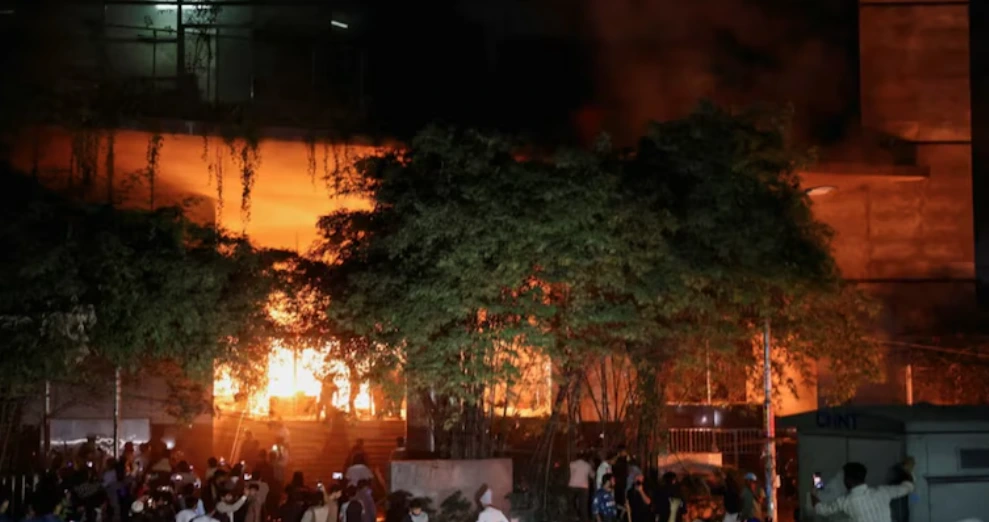
Violent protests erupted across Bangladesh after the death of student leader and political figure Sharif Osman Hadi, triggering fresh instability in the country and a sharp rise in anti-India sentiment. The situation turned volatile in Dhaka and several other cities as thousands of demonstrators poured onto the streets demanding swift action against those responsible for his killing.
Hadi, 32, was shot in the head by masked assailants while launching his election campaign in Dhaka last Friday. He was later airlifted to Singapore for treatment, where he succumbed to his injuries. Known for his polarising views and strong anti-India rhetoric, Hadi had emerged as a prominent face during the 2024 student uprising that led to the ouster of former prime minister Sheikh Hasina.
Fires, arson and tense streets in Dhaka
Soon after news of Hadi’s death broke, protests intensified in the Bangladeshi capital. Several buildings, including those housing leading media organisations, were set on fire, with authorities confirming that staff members were trapped inside during the blaze. Fire services later said the situation was brought under control, while security forces were deployed in large numbers to prevent further violence.
Demonstrators were seen chanting slogans invoking Hadi’s name, vowing to continue protests until those behind the attack were arrested. Multiple areas in Dhaka remained tense late into the night as police and paramilitary units attempted to restore order.
Protests spread, Indian mission targeted in Chittagong
Violence was not limited to the capital. In the port city of Chittagong, protesters gathered outside the Indian Assistant High Commission, raising anti-India slogans amid heightened anger on the streets. Similar unrest was reported from other parts of the country, signalling the widening scale of the crisis.
In Rajshahi, demonstrators torched Bangabandhu Sheikh Mujibur Rahman’s residence and an Awami League office, causing extensive damage. Authorities have not yet released a detailed assessment of losses, but security has been tightened across sensitive locations.
Anti-India sentiment deepens diplomatic strain
The latest unrest comes amid deteriorating ties between India and Bangladesh following Sheikh Hasina’s flight to Delhi. Earlier in the week, protesters under the banner of “July Oikya” marched towards the Indian High Commission in Dhaka, demanding Hasina’s return and raising hostile slogans against India.
India has formally conveyed its concerns to Dhaka over threats to its diplomatic missions and inflammatory statements by Bangladeshi political figures. New Delhi has rejected allegations linking India to the attack on Hadi, calling such claims false and misleading.
Yunus calls for calm, state mourning announced
In a televised address, interim chief Muhammad Yunus described Hadi’s death as an “irreparable loss” to Bangladesh’s political and democratic space. He urged citizens to exercise restraint, warning that continued violence could derail the country’s path towards a credible election.
The interim administration has announced a day of state mourning in Hadi’s honour, with national flags to fly at half-mast and special prayers planned nationwide. Bangladesh has been under an interim government led by Yunus since August 2024, with national elections scheduled for February 12.
India issues advisory for its nationals
Amid the unrest, the Indian High Commission in Dhaka issued an advisory asking Indian nationals in Bangladesh to avoid non-essential travel and limit movement outside their residences. Emergency contact details of Indian missions have been shared for assistance.
Manhunt launched for attackers
Bangladesh police have launched a manhunt for those behind Hadi’s killing, releasing photographs of two suspects and announcing a reward of five million taka for information leading to their arrest. Yunus has described the attack as a premeditated attempt by a powerful network to sabotage the electoral process.
Latest world news
India closes two more visa centres in Bangladesh amid worsening security concerns
India has temporarily closed visa application centres in Rajshahi and Khulna, citing security concerns following protests near Indian establishments in Bangladesh.
Published
3 days agoon
December 18, 2025
India has shut two additional Indian Visa Application Centres (IVACs) in Bangladesh — in Rajshahi and Khulna — citing the prevailing security situation in the country. The move comes a day after protests were held near the Indian High Commission in Dhaka by radical groups, raising concerns over safety around Indian establishments.
An official notification issued on the IVAC website said the centres in Rajshahi and Khulna were closed on December 18 due to security reasons. Applicants who had appointments scheduled for the day have been assured fresh slots at a later date.
The decision follows the temporary shutdown of the visa application centre in Dhaka earlier, even as New Delhi flagged a rise in open hostility towards India, particularly targeting the northeastern region, under the interim government led by Muhammad Yunus.
Bangladesh rejects India’s security assessment
Bangladesh’s Foreign Affairs Advisor Touhid Hossain dismissed India’s concerns and denied any deterioration in law and order. He distanced the interim administration from recent inflammatory remarks made by National Citizen Party (NCP) leader Hasnat Abdullah, who had publicly threatened to cut off India’s “seven sisters” and also issued comments against the Indian High Commissioner.
Hossain said the individual was not part of the government and termed his statements irrelevant. He also claimed that security arrangements were in place and that the shutdown of the Dhaka visa centre coincided with a local programme, which raised security-related questions.
Political backdrop and India’s response
The NCP, which emerged from student-led protests that led to the fall of the previous Awami League government, has extended support to the Yunus-led interim setup. Though the party has limited political presence, radical elements associated with it have organised anti-India demonstrations in Dhaka.
India, in an earlier statement, urged the interim government to ensure internal law and order and hold peaceful elections so that Bangladesh can return to an elected administration. However, the interim government appeared dismissive of this advice, with Hossain stating that India need not advise Dhaka on conducting elections.
Observers in Bangladesh have pointed out that delays in elections could benefit the unelected interim government, while radical groups may attempt to create disruptions by projecting India as a hostile actor. New Delhi has so far maintained a measured stance, despite remarks that directly question India’s sovereignty and territorial integrity, particularly in the northeastern region.

India announces T20 World Cup 2026 squad, Shubman Gill dropped as Axar Patel named vice-captain

Veteran Malayalam actor and filmmaker Sreenivasan passes away at 69

T20 World Cup 2026: Selectors weigh Shubman Gill role as India squad announcement awaited

Thick smog engulfs Delhi, flights and trains delayed as air quality slips to very poor




